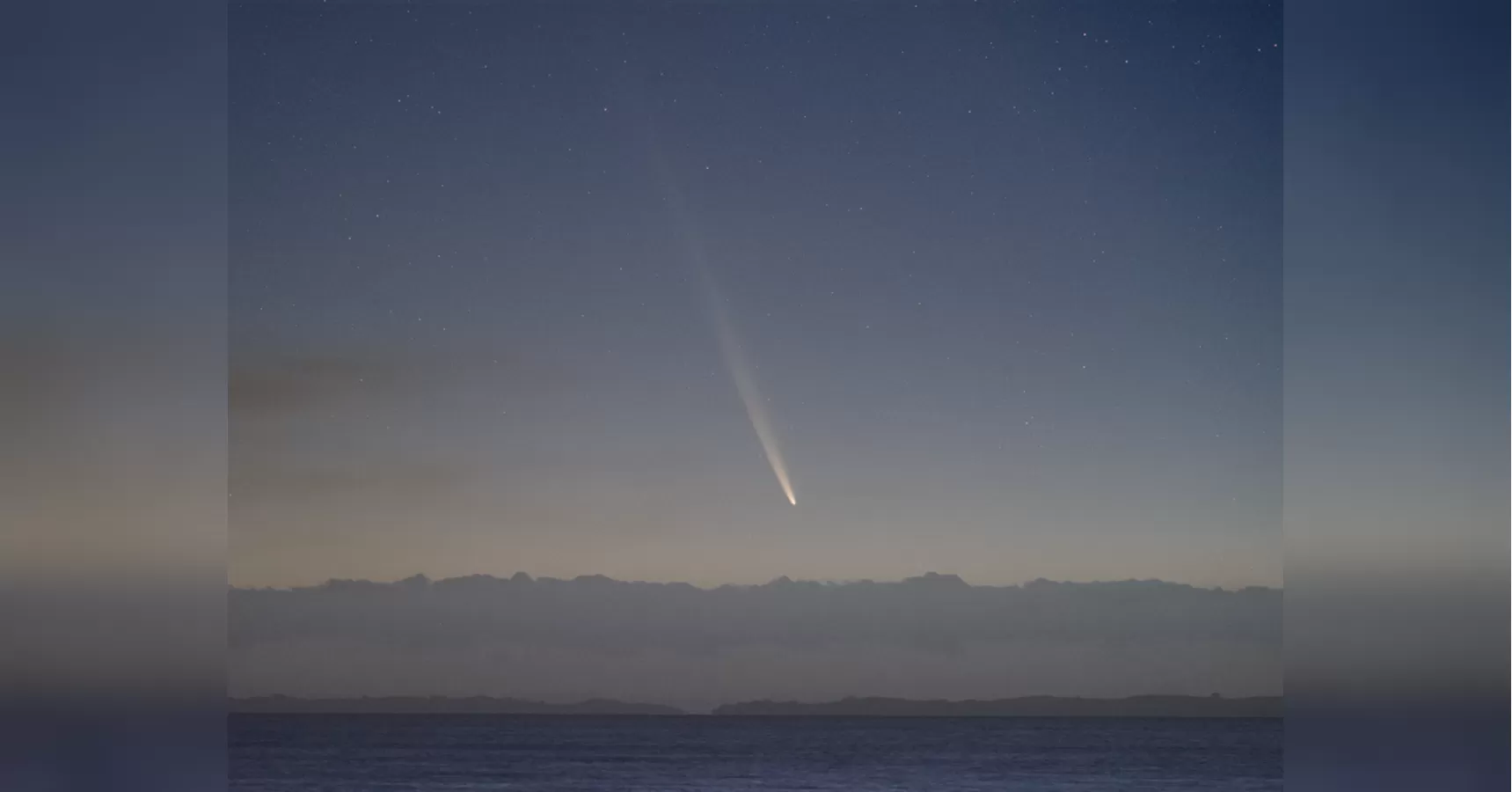In mid-October, a spectacular celestial event will take place as a comet makes its closest approach to Earth and the Orionid meteor shower lights up the night sky. This is an exciting time for astronomy enthusiasts and stargazers alike, as we are given the opportunity to witness two stunning cosmic phenomena in one month.
Let’s start with the comet. Named «Comet 46P/Wirtanen,» it was first discovered in 1948 by American astronomer Carl Wirtanen. This comet has a relatively short orbital period of just over 5 years and is classified as a Jupiter-family comet, meaning its orbit is influenced by the gas giant planet. On December 16th, 2018, Comet 46P made its closest approach to the Sun, known as perihelion, and is now making its way towards Earth.
On October 20th, Comet 46P will reach its closest point to Earth, also known as its perigee, at a distance of approximately 11.5 million kilometers. This may seem like a long way, but in astronomical terms, it is considered a «close approach.» The comet will be visible with the naked eye, appearing as a fuzzy greenish-white object in the night sky. However, using a telescope or binoculars will provide a better view of its distinct coma (cloud of gas and dust) and possibly even its tail.
What makes Comet 46P even more special is that it is expected to be one of the brightest comets of the year. According to NASA, it may even be visible during daylight hours. This is due to its close proximity to Earth and the fact that it will be passing through the constellation Taurus, which is known for its bright stars. So, if you want to catch a glimpse of this cosmic visitor, mark your calendars for October 20th and find a spot with clear skies and minimal light pollution.
But that’s not all. Towards the end of October, we will be treated to another celestial show — the Orionid meteor shower. This annual event occurs when Earth passes through the debris left behind by Halley’s Comet. The Orionids are named after the constellation Orion, as the meteors appear to radiate from this area of the sky.
This year, the peak of the Orionid meteor shower is expected to occur on the night of October 21st and into the early morning hours of October 22nd. During this time, up to 20 meteors per hour may be visible, with some potentially leaving behind glowing trails as they burn up in Earth’s atmosphere. The best time to view the shower is after midnight when the constellation Orion is high in the sky.
So, what can we expect from this year’s Orionids? Well, unfortunately, the bright light from the almost full moon may make it difficult to see some of the fainter meteors. However, if you are patient and give your eyes time to adjust to the darkness, you may still be able to catch a few shooting stars.
The Orionids are known for their fast and bright meteors, making them a favorite among stargazers. And with the added bonus of Comet 46P making its appearance in the sky, this year’s Orionid meteor shower is not to be missed.
But why are these cosmic events so special? Well, for one, they remind us of the vastness and beauty of our universe. They also give us a chance to appreciate the wonders of space and the importance of protecting our planet. Additionally, they provide opportunities for scientists to study and learn more about these celestial bodies, which can ultimately lead to a better understanding of our solar system and beyond.
So, whether you are an avid astronomer or simply someone who enjoys gazing at the stars, make sure to mark your calendars for mid-October and the end of the month. These two cosmic events are not only a treat for the eyes but also a reminder of the endless possibilities and mysteries that lie beyond our world. Happy stargazing!

